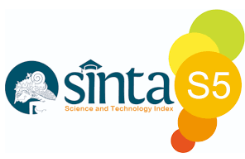Inflationary Trends and Its Determinants in Nigeria
DOI:
https://doi.org/10.55208/aj.v3i1.63Keywords:
Inflation, Money Supply, Exchange, Expenditures, DebtAbstract
This study examined Nigerian inflationary trends and drivers from 1985 through 2021(37years). The study explored how Money Supply (MS), Dollar Exchange Rate (DEXCHR), Government Expenditure (GEXP), and National Debt (NDT) affect Nigeria's Inflation Rate (INFLR). The Autoregressive distributed lag model showed mixed integration in aggregate secondary data from a CBN Statistical Bulletin. The model's multicollinearity and heteroskedasticity tests showed that it is homoskedastic and fit for prediction. MS only passed the statistical significance test long-term. This implies that MS is a strong determinant of INFLR in the long run (P-value= 0.0226) but not in the short run (P-value= 0.5056); DEXCHR exerted a positive insignificant effect on INFLR on the short and long run, evident with p-values of 0.3842 and 0.3981 respectively; LogGEXP exerted a negative significant effect on INFLR on the short and long run, evident with p-values of 0.0362 and 0.0289 respectively; and LogNDT exerted a positive Hence, inflationary trends do not significantly affect INFLR in Nigeria. The report advised the central bank to stop printing cheap currency to reduce money supply.
Downloads
Published
How to Cite
Issue
Section
License
Copyright (c) 2023 Onyinyechi Nneka Mbagwu

This work is licensed under a Creative Commons Attribution-NonCommercial-ShareAlike 4.0 International License.







